
Looking Back: Panama Pipeline Pushed Charger Hoops to National Prominence
January 30, 2023
SIOUX CITY -- The Newman Flanagan Center sits at the north side of The Cliff. Inside is Ray Nacke Court, the floor where hundreds of basketball games have been played, named after the most successful Briar Cliff men’s basketball coach and founder of the Panama Pipeline.
That pipeline of basketball players, aided by a highly supportive coach in Panama, resulted in a lot of things.
It brought a number of great players from the nation of Panama north to the Sioux City campus, drastically raising the program’s performance level, resulting in league championships, and deep national tournament runs and BCU players being drafted by NBA teams, which boosted the Chargers into national prominence.
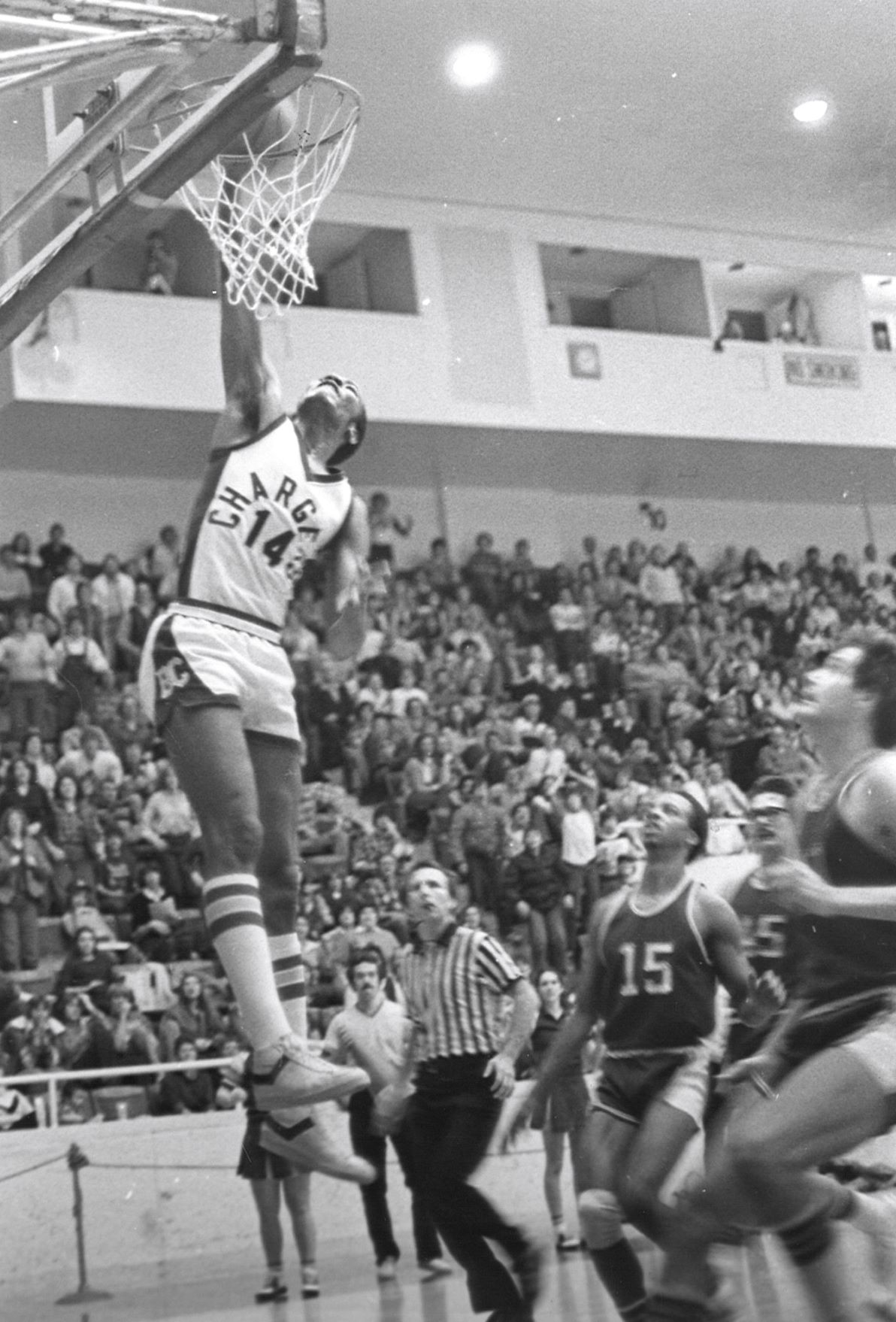 Panama native Rolando Frazier skies up for
Panama native Rolando Frazier skies up for
a dunk during a Briar Cliff game.
For instance, Sports Illustrated magazine on Feb. 2, 1981, published a feature, Pride of The Panama Pipeline. The Chargers under the tutelage of Nacke finished with a
No. 1 ranking in the final NAIA poll that year, when Panama native Rolando Frazier was a Charger senior, becoming the first player in the history of Iowa college basketball to score 3,000 career points.
Right after that in 1982, a new arena dedicated to basketball, the Newman Flanagan Center, opened at BCU, ushering in an era of exciting games on campus with big crowds.
Four Panama Pipeliners were drafted by NBA teams by the early 1980’s. But all four – Frazier, Eddie Warren, Ernesto “Tito” Malcom, and Mario Butler – instead headed back home to play for Panama’s national team. For much of the 1980’s, the Panamanian national team rolled out an all-Briar Cliff lineup.
While the Panama Pipeline ended after roughly 20 years with 29 Panamanian men playing for Briar Cliff, those who were part of it still feel pride today in what was accomplished on the court and in getting advanced educations. Many hailed from Panama City, a hardscrabble town of 35,000 people.
One was Amado Martinez, who played for the Chargers from 1987 to 1991.
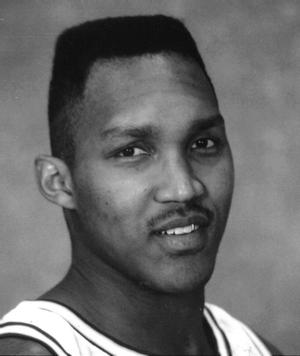 Amado Martinez head shot
Amado Martinez head shot
"I don’t regret a single part of it…I got a lot from Briar Cliff, as a human, as a person,” he said in January 2023.
Nacke first coached for Briar Cliff in the 1971-72 season, which was only a few years after the former women’s college went coed and added some men’s sports programs.
Nacke ultimately coached for 26 years to 1997, resulting in more than 500 wins for the Chargers. He passed away in September 2015 at age 79, which churned much remembrance of his achievements, of which fans today can be reminded when looking at the hardwood, where two references to the Ray Nacke Court are painted.
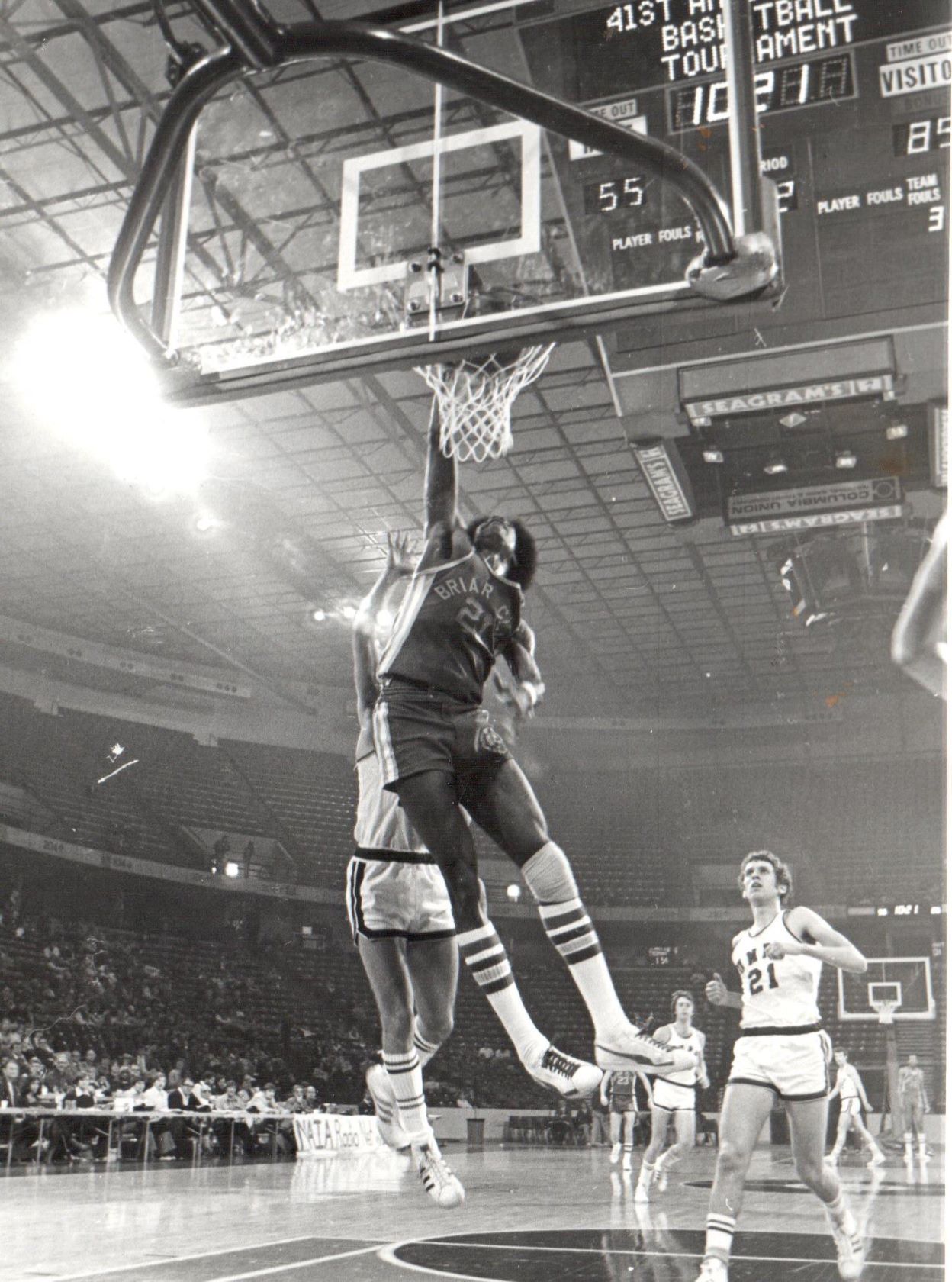 Eddie Warren, the first person from the nation of Panama to play for the
Eddie Warren, the first person from the nation of Panama to play for the
Briar Cliff men’s basketball program, scores a basket in a game in
the 1978 NAIA national tournament.
Groundwork for the eventual pipeline in the mid-1970’s was developed after Briar Cliff played against Doane College in Nebraska, who at the time had three starters from Panama. In the Sports Illustrated article, Nacke is quoted as saying, "They blocked three of our first five shots. Our trainer was from Peru and spoke Spanish, so I asked him to find out how those guys got up here."
With the help of the Spanish-speaking team manager, Nacke came to understand the influence of Cecilio Williams, the coach of the Panama national team and also the Panama Pump team. Nacke got in contact with Williams, writing him letters on the virtues of the BCU program and making a connection fairly quickly. Briar Cliff's first Panamanian student-athletes, Eddie Warren, a smooth 6-foot-4 forward, and Fred Butler, a 6-foot-5 player, arrived for the 1974-75 season, when the Chargers still practiced in a maintenance shed.
By 1978-79, the pipeline flowed, as the men’s squad featured seven Panamanians.
Martinez said he still is surprised the Doane coach “gave up his secret recipe” of contacts that resulted in Nacke connecting with Williams.
“(That) paved the way for all the players to Briar Cliff…They were Division I (basketball caliber) material, but there were no Division I opportunities,” Martinez said.
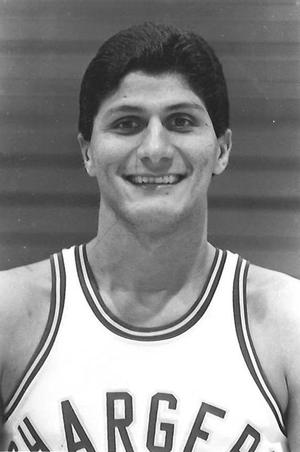 Mario Galvez head shot
Mario Galvez head shot
By the early-mid 1980’s, a second wave of Panamanian players included such hoopsters as Reggie Grenald, Fernando Pinillo, and Mario Galvez, who still is the all-time leading career scorer with 3,215 points and owns the single-game scoring record with 61 points vs. Marycrest on February 7, 1986. Ramon Pastrano, who hailed from Puerto Rico and was a 1985 Briar Cliff graduate, said it is important to note the Panama Pipeline was also key in influencing players from Puerto Rico, U.S. Virgin Islands, and Central America to enroll at Briar Cliff.
Jimmy Williams, a son of Cecilio Williams, in an interview from his home in Panama said his father grew to quickly embrace Briar Cliff as a quality destination for a lot of players.
“My father was looking for a small college where he could send low-income players to have a decent education. He had already done it at Doane, and it was time to look for another one,” Jimmy Williams said.
Cecilio Williams wanted the Panamanian players to come in groups.
“He was clear that it was necessary to keep the core of the national team playing together all year, so that in competitions (as the Panamanian team) they could stand out,” said Jimmy Williams, who himself played for the Briar Cliff hoops team as a backup point guard from 1987 to 1989.
It was difficult with all the coaching duties that Cecilio Williams had in Panama for him to come to Iowa and watch the Panamanians play for Briar Cliff, but it did happen a few times, Jimmy Williams said.
Martinez now lives in Omaha, and to this day ranks fourth in scoring and sixth in rebounds in the Chargers career categories. He came back to campus most recently in the 2021-22 season to see a daughter play as an opponent to the Chargers women’s team.
Thinking back to his days growing up in Panama City, Martinez said he lived in a “dangerous” neighborhood, a ghetto with gangs and drugs. Martinez said he “idolized” those BCU Panamanian players, and he came to know Cecilio Williams and Jimmy Williams at the opportune time as he got older and better in basketball.
“He really rescued me. I met Jimmy in junior high. His father (Cecilio) became not just a coach, but a father figure at a time I needed one,” Martinez said.
Once at The Cliff, Martinez was grateful to meet two highly helpful people on campus, as his English skills were limited. He cited the Franciscan nun Sister Loyola Meuret and a nontraditional adult learner Jeanne Hecker, “who gave me that love and care, like a mother gives.”
Pastrano, who now lives in the Minneapolis area, also knew both women during his time at Briar Cliff.
“Upon our arrival in 1980, we realized that BCU was not prepared to support non-English-speaking students. Therefore, Sister Loyola began to teach and tutor many of us. In an indirect way, you can credit her for starting a pseudo-English as a second language program at BCU,” Pastrano said.
Pastrano said Hecker was well into middle age when she began taking classes at Briar Cliff, including some with the pipeline players.
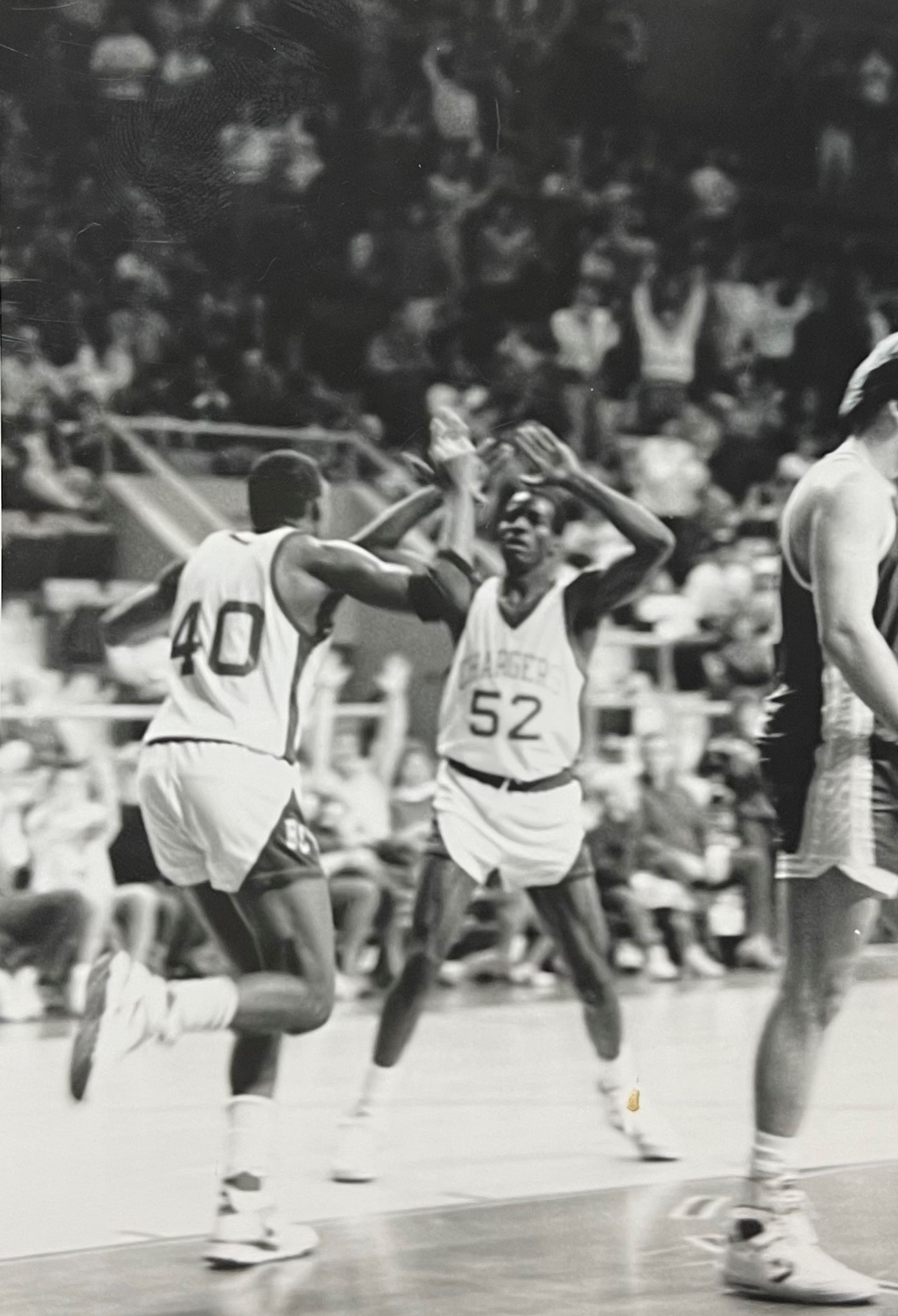 Amado Martinez (40) heads down the court after scoring,
Amado Martinez (40) heads down the court after scoring,
and is congratulated by Carlos Rochead in a 1988-89 game.
Both Charger players were from Panama.
“The whole thing began with Jeanne baking cookies for us. Soon she began tutoring a couple of us with our writing courses. Among those were, me, Jose Ortega, and Jose Rodriguez. The following year, I introduced her to my roommate Mario Galvez, and to Fernando Pinillo a year after. From there on the whole thing exploded! She not only became a teacher and tutor but also a mother or should I say, mother hen,” Pastrano said.
Martinez said some people are curious to know how the Panamanian players got along with the Briar Cliff white players predominantly from Siouxland and the Midwest. He said there was never any racism exhibited by teammates.
“Those guys embraced me like a brother, to this day,” Martinez said.
Martinez was a 6-foot-8 player who played in the mold of a traditional center, posting up low near the paint with his back to the basket, then turning with a drop step to shoot.
Nacke-led teams made eleven trips to the NAIA Division I National Championship, and he amassed a 507-257 record, making him the winningest coach in NAIA history. Martinez was on two national qualifiers, and more than 20 years later he can specifically cite the tournament wins and losses and key details, plus the two games he poured in his career highs of 35 points.
Being undefeated at Newman Flanagan his senior year is a special memory. “It was the best, it still gives me chills, the fans, the atmosphere, it was crazy,” Martinez said. “Some fans were there every single game.”